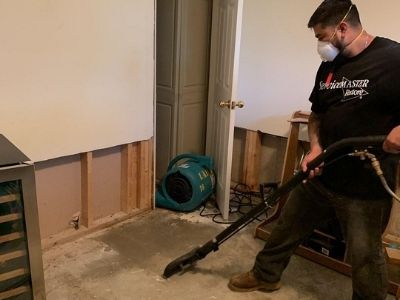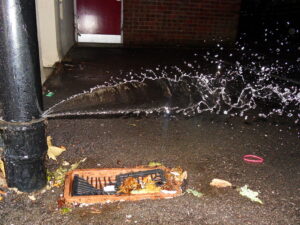Quick-Response Plumbing: Tips for Identifying and also Repairing Burst Pipes
Quick-Response Plumbing: Tips for Identifying and also Repairing Burst Pipes
Blog Article
Just how do you feel in relation to What to Know Before Installing a Dishwasher?

A ruptured pipe is a major emergency; you can just stand as you watch water you pay a lot to reunite with the planet. In even worse cases, you see a pool on your cooking area floor, which is a great journey risk, specifically if you have kids around. If the pipeline that burst remained in your walls, problem: you may require to repaint that whole area.
Exactly how can a calamity like a burst pipeline be avoided and handled? Well, by paying attention to your professional emergency plumbing professionals and adhering to these guidelines.
Exactly how do I recognize when my pipes have ruptured?
Fluctuating water stress
Pipes do not just burst in a day. You might have discovered that your cooking area tap or shower does not run immediately when you turn the tap. It might pause for a couple of secs and after that blast you with even more force than typical.
In various other instances, the water may appear normal initially, after that drop in pressure after a couple of secs.
Contaminated water
Lots of people think a burst pipe is a one-way electrical outlet. Quite the contrary. As water drains of the hole or laceration in your plumbing system, impurities locate their way in.
Your water may be contaminated from the source, so if you can, inspect if your water container has any kind of troubles. However, if your drinking water is supplied as well as cleansed by the local government, you must call your plumber quickly if you see or scent anything funny in your water.
Puddles under pipes and sinks
When a pipe bursts, the outflow forms a puddle. It may appear that the puddle is expanding in dimension, and also no matter how many times you mop the puddle, in a few mins, there's another one waiting to be cleaned. Often, you may not be able to trace the pool to any kind of noticeable pipelines. This is an indicator to call a specialist plumber.
Damp wall surfaces as well as water spots
Before a pipe bursts, it will leak, most times. If this persistent dripping goes unnoticed, the leak may finish right into a broad gash in your pipeline. One very easy method to avoid this emergency is to keep an eye out for damp walls advertisement water spots. These water stains will lead you right to the leakage.
Untraceable leaking sounds
Pipe ruptureds can happen in one of the most unpleasant locations, like within concrete, inside wall surfaces, or under sinks. When your home goes silent, you might be able to listen to an irritatingly persistent trickling noise. Also after you've examined your shower head and cooking area tap, the trickling may continue.
Beloved visitor, the dripping might be coming from a pipeline inside your wall surfaces. There isn't much you can do about that, other than tell a specialist plumber.
Turn up the Warmth
Set up followers to blow warm right into chilly rooms. Maintain the garage door closed. If you have lowered water circulation, heat one of the most prone pipes (generally in cellars and crawl spaces or near outside walls) with a hair clothes dryer. Leave the tap on while you apply heat. As you thaw ice, the flow will increase. To stop pipes from freezing, shield your wall surfaces.
Begin Getting Rid of the Water
Get the mop, buckets and also a store vacuum cleaner to start to get rid of the water due to the fact that you absolutely don't want it saturating right into whatever else in the house. And also, a fast clean up will lower the opportunities of something obtaining moldy.
What do I do when I spot a ruptured pipe?
Your water meter will remain to run even while your water wastes. To decrease your losses, discover the main controls and also transform the supply off. The water mains are an above-ground structure beside your residential property.
How to Fix & Detect a Leaking Pipe
How Do I Know if a Pipe is Leaking?
Leak detection tests can help you determine if your pipe has a leak. Even if you don’t see an apparent leak, you should still conduct leak detection tests regularly to save water and money—and prevent major damage to your home.
Water meter. It can be helpful to figure out what your usual water meter usage numbers are and then monitor them regularly. To monitor your meter, first, turn off all water faucets in your home. Check the meter and write down the numbers. In a few hours, check the meter again. If the numbers have changed, you have a leak. Water gauge. Use a water gauge to test your water pressure. Your showerhead should produce a certain amount of water pressure based on its model and design. If the pressure is lower than it is supposed to be for that specific showerhead, your home likely has a leak. Puddles. Look inside your bathroom, laundry, and kitchen sink cabinets. Puddles around the cabinets or around toilets, tubs, showers, and washing machines indicate the presence of a leaking pipe. You may also notice loose tiles, peeling or flaking paint, or mold caused by water accumulation. Napkin test. Even if you don’t see any puddles, you may still have a leak. You can test for water leaks in the bathroom, laundry, and kitchen by wiping below-sink connections with a napkin, paper towel, or piece of toilet paper. If it becomes damp, you probably have a leaking pipe under the sink. Discolored walls. Walls that are discolored—usually with brown or yellow stains—or bulging might mean that they have been impacted by water damage caused by a leaking pipe. Smell. A leaky pipe will create sitting water, and over time, that water may develop a musty smell. If your home smells musty, but you can’t locate the source, it may be due to a leak. Steps for Fixing a Leaking Pipe
A leaky drain can be remedied by tightening the pipe base, replacing the drain seal, caulking the rim, and tightening the pipe nut. Similarly, a leaking toilet pipe can be treated by tightening the packing nut. You may also need to replace the valve. A leaky faucet may just need tightening or replacement of the washers. If that doesn’t work, consider replacing your faucet. If your pipe has a hole in it, you may want to use a pipe leak sealer or pipe leak tape. This quick fix for water pipe leaks can also temporarily fix a copper pipe leak. https://www.ahs.com/home-matters/quick-tips/how-to-tell-if-pipes-are-leaking/

We are very serious about What to Know Before Installing a Dishwasher and I am assuming you enjoyed reading the entire entry. Remember to take the opportunity to promote this blog post if you enjoyed reading it. I cherish reading our article about What to Know Before Installing a Dishwasher.
Schedule Appointment Now
Report this page